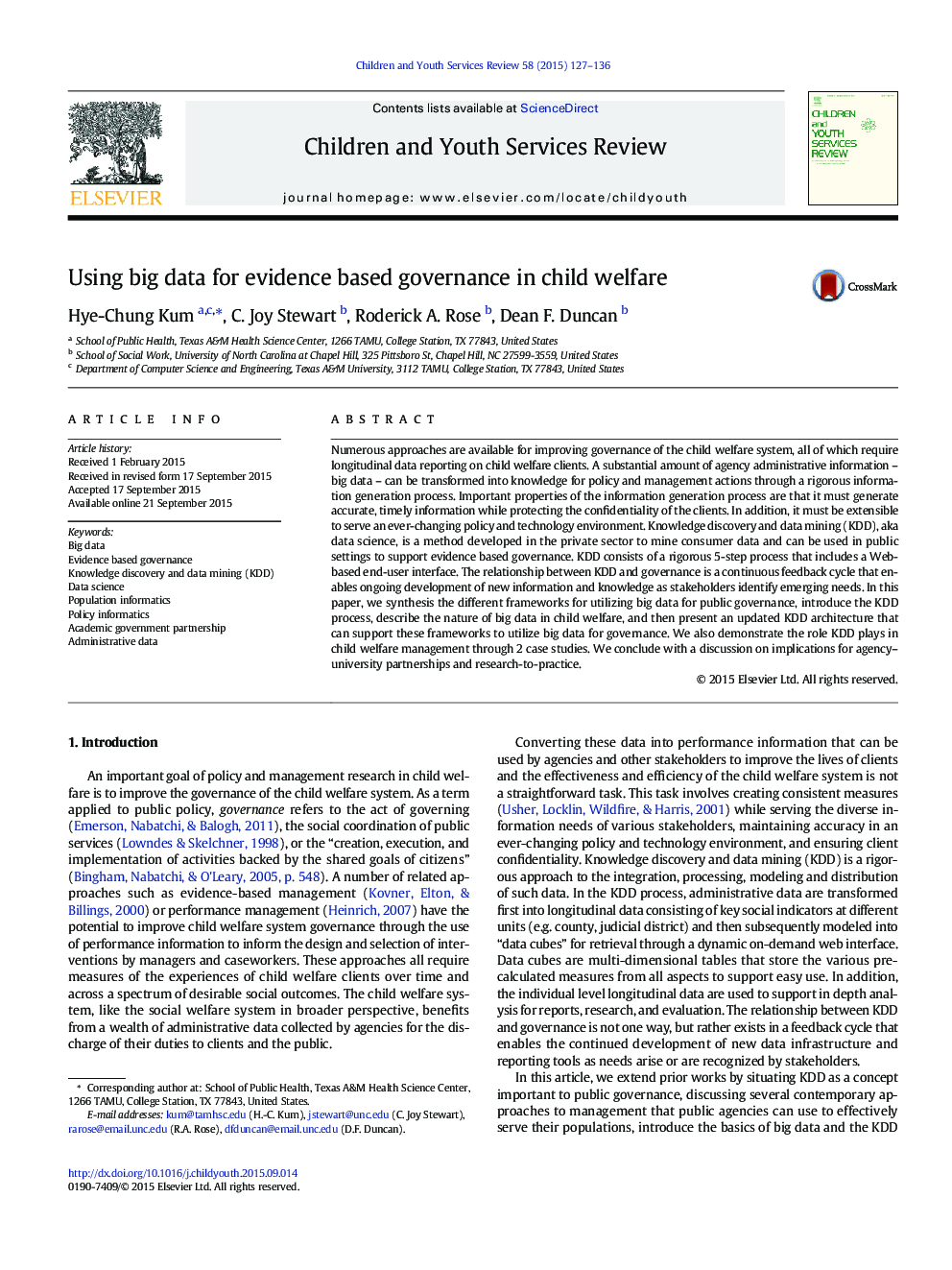| Article ID | Journal | Published Year | Pages | File Type |
|---|---|---|---|---|
| 345926 | Children and Youth Services Review | 2015 | 10 Pages |
•Defines the 5 Vs of big data and the KDD process, i.e., data science, in the context of public governance.•Synthesizes the different frameworks for utilizing big data for evidence based public governance.•Outlines an agile and extensible KDD architecture that can support these frameworks to efficiently use big data for governance.•KDD consists of a rigorous information generation process that includes a Web-based end-user interface.•University and agency partnerships grounded in trust and mutual benefit create the critical bridge between research and practice.
Numerous approaches are available for improving governance of the child welfare system, all of which require longitudinal data reporting on child welfare clients. A substantial amount of agency administrative information – big data – can be transformed into knowledge for policy and management actions through a rigorous information generation process. Important properties of the information generation process are that it must generate accurate, timely information while protecting the confidentiality of the clients. In addition, it must be extensible to serve an ever-changing policy and technology environment. Knowledge discovery and data mining (KDD), aka data science, is a method developed in the private sector to mine consumer data and can be used in public settings to support evidence based governance. KDD consists of a rigorous 5-step process that includes a Web-based end-user interface. The relationship between KDD and governance is a continuous feedback cycle that enables ongoing development of new information and knowledge as stakeholders identify emerging needs. In this paper, we synthesis the different frameworks for utilizing big data for public governance, introduce the KDD process, describe the nature of big data in child welfare, and then present an updated KDD architecture that can support these frameworks to utilize big data for governance. We also demonstrate the role KDD plays in child welfare management through 2 case studies. We conclude with a discussion on implications for agency–university partnerships and research-to-practice.
